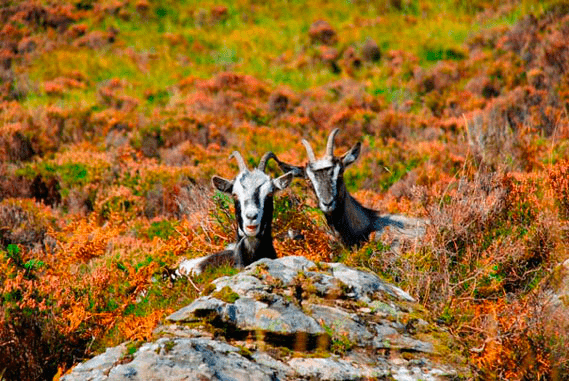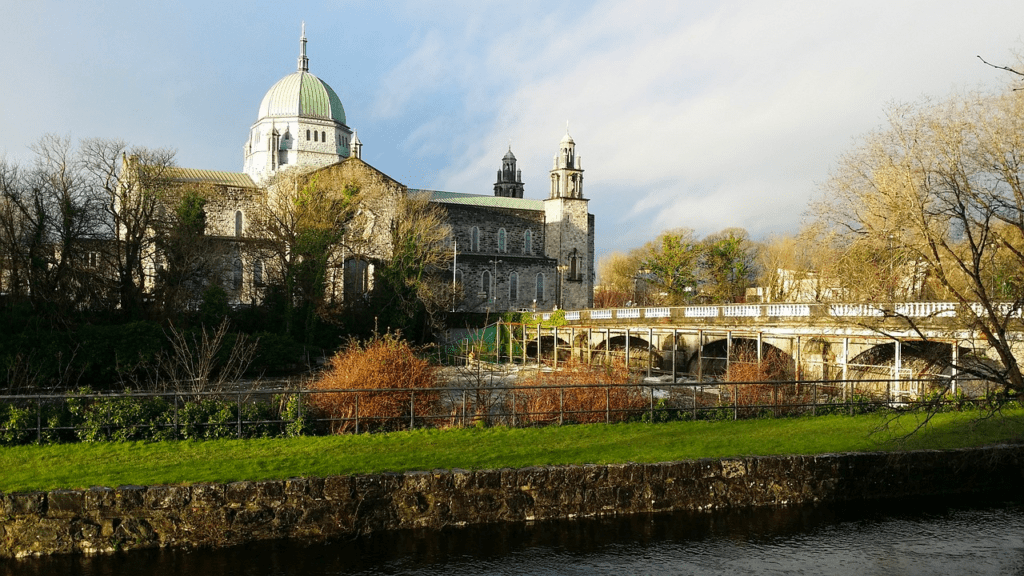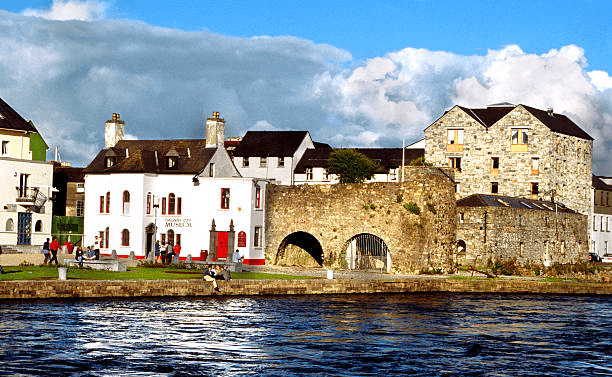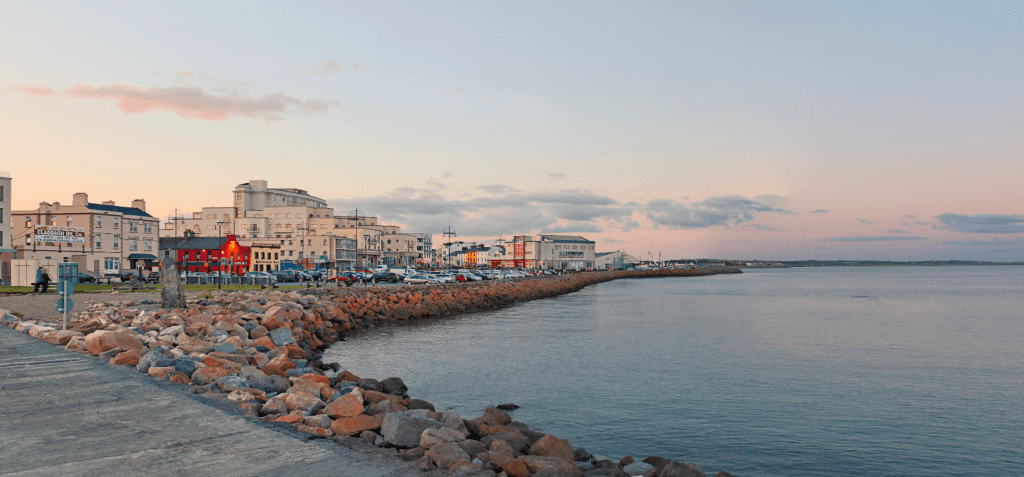11 Best Places to Visit While in County Galway

County Galway has it all when it comes to adventure – from the Aran islands to the bustling city of Galway. Small and close-knit, this picturesque coastal town offers visitors a taste of everything Ireland is famous for, including a wealth of tourist activities to keep them occupied throughout their journey.
Galway is home to some of Ireland’s most spectacular natural attractions, from the rugged coastline to the stunning Wild Atlantic Way, as well as a wealth of historical museums and cathedral sites popular with tourists within the city’s boundaries. There’s no limit to the fun to be had in Galway’s best attractions.
Here are the 11 best places to visit while in County Galway that you absolutely can’t miss.
1. Aran Islands
Take a journey back in time to explore the Aran Islands, an Ireland you may have only encountered in books. From the Bronze Age to the modern day, explore Dún Aonghasa, and take in the sight of the large basking sharks that inhabit the waters around all three islands. Don’t be afraid to bring home a unique Aran jumper as a souvenir.
Ferry services to the islands are available from Rossaveal, Galway, with twice-daily sailings year-round and more frequent departure times in the summer. With so much to explore, you may find yourself staying longer than you bargained for.

2. Connemara National Park
If you are looking for a way to get away from the hustle and bustle of the city centre and explore one of Ireland’s most picturesque national parks, then Connemara Park is the place to be. It is full of rolling hills and dramatic mountain scenery, making it an ideal destination for bird watchers and hikers alike. There is a variety of hiking trails for all levels of experience, such as the Lower Loop of Diamond Hill.
Additionally, the park is home to a wide variety of wildlife, including the common kestrel, woodcocks and merlins, as well as hawks and Peregrine Falcons. However, if you are visiting during a wet season, it is essential to stick to boardwalks as the bog is particularly wet.

3. The Clifden and the Sky Road
Clifden, situated on the outskirts of Galway’s rural countryside, is an enchanting and picturesque town, offering a variety of activities to suit any time of day, whether it be a lunch break or a leisurely stroll around the grounds. It is the capital of the region and the largest city in the area and is surrounded by the rugged Atlantic coastline. In recent years, the town has seen a surge in activity, with a variety of shops, cafes, restaurants and places to listen to live music.
However, one of the most popular attractions in the area is the Sky Road, which is a winding scenic drive that ascends from the village’s low-lying hills, about 5.5 kilometres (3.4 miles) outside the town of Clifden, providing a breathtaking view of the Atlantic Ocean for miles around.

4. Kylemore Abbey
Situated on the grounds of Kylemore Abbey, founded in 1920, this Benedictine nunnery was built on the grounds of the former Kylemore Castle. The residence and abbey are truly remarkable, while the Gothic Church is truly awe-inspiring. Despite still being a functioning monastery, it is still a stunning sight to behold. Additionally, the abbey is home to some of Ireland’s most remarkable Victorian Walled Gardens.
Visitors to the abbey can admire and take photographs of the grounds from the car park, but an admission fee must be paid to enter. Entrance tickets to the abbey, neo-gothic church, Victorian walled gardens, teahouse, complimentary history talks, and guided garden tours are available throughout the summer.
If hunger strikes, visitors to the abbey should head to Le Petite Pois, which serves some of the most delicious French cuisines in Galway. The salmon is particularly succulent.

5. Galway Cathedral
Galway Cathedral is a picturesque sight to behold, particularly at night. It is situated eight minutes away from St. Nicholas’s Church and is one of Ireland’s oldest cathedrals, as well as one of Europe’s youngest. Built-in the 1960s by J. J. Robinson, the cathedral features a combination of Renaissance and Romanesque styles, as well as Gothic elements.
Additionally, the cathedral houses a remarkable collection of artworks, including a large crucifix mosaic from Patrick Pollen, rose-coloured windows, and Imogen Stuart’s statue of the Virgin. Literature aficionados may wish to pay a visit to the museum, the smallest in Ireland, which houses the house of Nora Barnacle (James Joyce’s wife).

6. The Spanish Arch and Galway City Museum
The Spanish Arch, which is believed to have been named after the Spanish traders who used to dock in the port of Galway, is a renowned landmark in the city. Constructed in 1584, it was part of an expansion of the city’s much older walls. Originally, the arch served as a watchtower for soldiers and had cannons mounted on its roof. However, it was damaged during the Galway Tsunami in 1755, which was the same as the one that struck Lisbon following the Big Lisbon Earthquake. Consequently, the Spanish Arch should not be overlooked when visiting Galway.
Take some pictures and keep walking. A few minutes later, you’ll arrive at the city’s museum, a glass-fronted building that reflects the town’s walls. The museum’s main focus is on Galway’s history, with exhibits showcasing everything from the city’s most famous hooker boat to local literary luminaries. Some of the museum’s more interesting pieces include prehistoric stone axe heads, an authentic medieval cannonball, and the execution warrant for “Myles Joyce”, a local who, in 1882, was wrongfully put to death for murder.

7. Eyre Square
If you’re planning a trip to Galway, you won’t want to miss out on visiting Eyre Square, a recently refurbished city centre park which is surrounded by a variety of shops and businesses. The area is also home to the city’s tourist information centre.
The square is home to a variety of historical landmarks, such as the John F. Kennedy Memorial, the Pádraig Ó Conaire Statue, the Browne Doorway and many more. For those interested in the history of the area, the Eyere Square Shopping Center is a must-visit, featuring sections of the city’s medieval walls.

8. Salthill Promenade
If you’re looking for a beach getaway, Ireland might not be your first choice. But don’t let that stop you from taking a stroll and exploring the beautiful coast of Salthill. In the summer, you can go for a dip on Blackrock’s diving board – although the Atlantic waters can get chilly! There are plenty of historic bars, trinket shops, and ice cream spots along the promenade.
If you’re feeling hungry or want a pint, O’Reilly’s is a great spot for a quick bite to eat. After that, take a long walk along Galway Bay and take in the beauty of the area. After that, head to the Monroes Tavern to get a pint of Guinness and listen to some classic Irish music.

9. Brigit’s Garden
Brigit’s Garden is one of the best places in the west of Ireland to visit, and it’s easy to see why. The four main gardens commemorate Celtic fire festivals and are framed by meadows planted with wildflowers and surrounded by a lake, fairy fort and native woodland pathways.
On a walk through the gardens, you’ll be transported through the Celtic cycles of the seasons. Each garden is dedicated to a Celtic festival, from Samhain to Imbolc to Bealtaine, and each garden celebrates a different Celtic festival. The seasonal cycle reflects the circle of life, from birth to old age, and from life to death. The design of Brigit’s Garden combines traditional Celtic stories with modern design, creating spaces that are both tranquil and inspiring, as well as full of life.

10. Dunguaire Castle
Situated on the banks of Donegal Bay, the charming castle dates back to the early sixteenth century when it was constructed by the O’Hynes clan. The castle has been used for film sets in the past and has been visited by actors including Kurt Russell, Roger Moore and W. B. Yeats who used it as a meeting point for the literary revivalists.
Dunguaire Castle is open to the public on a guided tour and visitors can explore the castle’s fascinating history on their own or take part in a four-course medieval banquet.

11. Lough Corrib
Lough Corrib, a lake situated in the western part of Ireland, covers an area of 69 square miles. It is a popular destination for anglers, particularly those seeking wild trout and salmon. Over the centuries, the lake has been a source of inspiration for many writers and artists, including Oscar Wilde’s father, the historian William Wilde, who wrote a book about the lake.
In addition to its natural beauty and its fishing opportunities, the lake is also a special area of conservation due to its recent historical discoveries, including dugout canoes from the Bronze Age and Viking battle axes from the 10th century. Additionally, the lake is a stopover on the Connemara Tour from Galway City and is the location of several fishing tours.

To sum up, Galway is a magical city with a rich history, culture and natural beauty. Whether you’re a history lover, nature enthusiast or simply looking for an adventure, Galway has something for everyone. From the bustling city streets to the stunning coastal scenery, there’s something for everyone in Galway.
So, now that you know everything there is to know about Galway, it’s time to start planning your own adventure. Take a stroll through the winding streets, listen to the traditional Irish music, sample the local cuisine, and soak up the cultural heritage of this enchanting city.
Don’t hesitate to reach out to us with your experiences and recommendations, we’d love to hear from you. Galway is calling, so don’t miss out!
